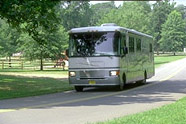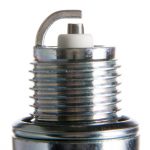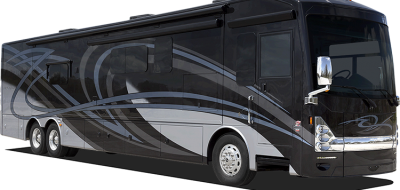When most people do research prior to buying a new vehicle, they generally compare the models they are interested in. For this evaluation, they probably should look at performance specs in the following areas.
• Engine Horse Power and Torque
• Acceleration Performance
• Braking Distance from 60 mph
• Fuel Economy
• Number of Forward Gears
• Perhaps Top Speed
 So, apart from picking them for their looks, comfort and desired features, there are a number of measurements that have to pass the test. While some items may be more important than others, depending on the buyer’s preferences, the evaluation procedure still remains about the same.
So, apart from picking them for their looks, comfort and desired features, there are a number of measurements that have to pass the test. While some items may be more important than others, depending on the buyer’s preferences, the evaluation procedure still remains about the same.
What about motorhomes? Except for the engine hp and torque, most of this data for a Class A motorhome is either not available or irrelevant.
Length, height and weight may be some of the first specifications you view. The engine hp and torque are solid numbers that can be easily compared. A general rule that motorhome buyers use is to calculate the number of pounds per rated hp. The ideal ratio here is to have 100 pounds per hp or lower.
Class A Performance Specs: Acceleration, Braking and Fuel
Acceleration performance for certain motorhomes can be found occasionally in road test reports. This information is of little value, as we know they will all get from stopped to highway speed in a reasonable time, given the size and weight.
Braking performance has never been a specification available for Class A coaches. This is perhaps due to varying net curb weights. A difference of 2 or 3 tons from one to another is possible, which would give rise to highly inaccurate specifications. In addition, I don’t believe such testing and reporting are a requirement at this time for a manufactured motorhome.
As far as fuel economy, the numbers generally will not be as accurate as they are for your daily driver. Motorhomes are subject to varying weight changes, heavier alternator load configurations, occasional generator operating needs and, of course, winds and atmospheric conditions. A 15 mph headwind in your car has a marginal effect on fuel consumption. The same scenario in a class “A”, with the aerodynamics of a concrete block, will not be so trivial. Your RV may well guzzle 25% or more fuel than it normally consumes. So, tongue in cheek when you read this spec.
If you are vying for a diesel pusher, the transmission will inevitably be a 6 speed Allison for most. Less popular are ZF transmissions with 10 or so speeds.
Top speed? This is hardly a sought-after number on a coach. Besides, they are ECM limited at around 85 mph anyway, so you can forget about hitting the Autobahn.
Now you only have to pick a floor plan.
Peter Mercer—With The Numbers





